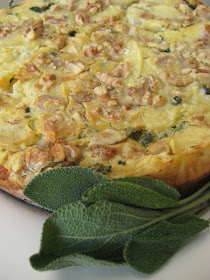What better post for the weekend than a whole bunch of cocktail recipes?
Jonas and I enjoyed a plethora of good cocktails in
New Orleans, home of many of the world’s most famous drinks.
Did you know that New Orleans is the home of the following cocktails:
• Sazerac
• Ramos Gin Fizz
• Brandy Milk Punch
• Hurricane
Just as I suspected, the Brandy Milk Punch turned out to be my favourite of New Orleans' cocktails. Perfect to start off the day at breakfast, or end the evening with a milky treat before bed. Delicious, sweet and comforting!
Brandy Milk Punch
Recipe by the Museum of the American Cocktail. Makes 1.
Ingredients:
2 oz. (60ml) brandy
1 oz. (30ml) sugar syrup
4 oz. (120ml) milk
Method:
1. Shake with ice and serve in a punch glass. Dust with nutmeg.
The Sazerac is supposed to be America’s first cocktail, originating in pre-Civil War New Orleans in the 1830s. For those with a low alcohol tolerance, this is one dangerous drink.
Sazerac
Recipe from neworleansonline.com Makes 1.Ingredients:
3-4 dashes of Herbsaint
2 oz. (60ml) Rye of Bourbon blended whiskey
3-4 hearty dashes of Peychaud bitters
One long, thin twist of lemon
Sugar cube, water, club soda—optional
Method:1. Place Herbsaint in a well-chilled Old Fashion glass. Tilt glass to coat sides completely and pour off excess Herbsaint.
2. Place Rye and Peychaud bitters into cocktail shaker with ice cubes. Shake for 30 seconds and strain into prepared glass.
3. Twist lemon peel over drink and drop in gently.
This photo was pilfered from
www.starchefs.com because I was too busy drinking to take a photo of my own!
This great cocktail is pure deliciousness. Originally called the New Orleans Fizz, it was invented by Henry Ramos in 1888. Based on a regular gin fizz, the addition of eggwhite and orange flower water gives an aromatic elegance to Ramos’ version.
Ramos Gin FizzRecipe by Art of Drink. Makes 1.
Ingredients:2 oz (60ml) gin
½ tablespoon egg white (powdered)
½ oz (15ml) sugar syrup
½ oz (15ml) lemon juice
½ oz (15ml) lime juice
1 oz (30ml) cream
3 drops orange flower water
1-2 oz (30-60ml) soda water
Method:
1. Combine the gin, cream, egg white, lime juice, lemon juice and sugar syrup then shake, shake, shake until it gets creamy.
2. Then add a scoop of ice and shake for another 30 seconds. Once that is done strain the drink into a tall glass with an ounce or two of soda water on the bottom.
Tip: Don’t add the soda water after the drink is in the glass because it breaks the foam and makes for a watery drink.
According to Pat O’Brien’s (the Hurricane creators) during WWII staple booze was in low supply so salesmen would force bars to buy mass amounts of cheap Caribbean rum to get a little of the good stuff (like whisky). Pat O'Brien's owner decided to entice the crowds with cheap fruity rum punch in a novelty shaped (hurricane lamp) glass.
Hurricane
Recipe from The Gumbo Pages. Makes 1.
Ingredients:
1.5 oz (45ml) light rum
1.5 oz (45ml) dark rum
1 oz (30ml) orange juice
1 oz (30ml) fresh lime juice
¼ cup passion fruit juice
1 teaspoon superfine sugar
1 teaspoon grenadine
Cherries with stems, and orange slice to garnish
Ice cubes
Method:
1. In a cocktail shaker, mix the rum, passion fruit juice or syrup, the other juices and the sugar until sugar is dissolved.
2. Add the grenadine, and stir to combine, then add ice and shake.
3. Half-fill a hurricane glass with ice, then strain drink into glass; add ice to fill. Garnish with orange slice and cherries.
Napoleon House is a beautiful bar, built as a residence in 1797 for New Orleans’ mayor Nicholas Girod. It was offered as a refuge Napoleon Bonaparte in 1821, explaining how it got it’s imperial name. Although not a cocktail invented in New Orleans, Napoleon House makes such a mean Pimm’s Cup that it might as well have been their’s to start with.
Napoleon’s Pimm’s Cup
Recipe by Napoleon House. Makes 1.
Ingredients:1 ¼ oz. (40ml) Pimm's No. 1 Cup
3 oz (90ml) lemonade (made from lemons!)
7up
Freshly sliced cucumber
Method:
1. Fill a tall 12 oz glass with ice.
2. Add Pimm's and lemonade.
3. Then top off with 7up.
4. Garnish with cucumber.
The first written record of the mint julep was published in London in 1803 and called it
“a dram of spirituous liquor that has mint steeped in it, taken by Virginians of a morning”. Given that the mint julep is the official drink of the Kentucky Derby, it’s most certainly known as a
Southern drink and is drunk en masse in New Orleans (which seems to claim it as its own).
Mint JulepRecipe by the Museum of the American Cocktail. Makes 1.
Ingredients:½ oz. (15ml) sugar syrup
2 sprigs of fresh mint
2 oz. (60ml) bourbon
Method:1. Muddle, with sugar syrup, one sprig of mint in the bottom of a highball glass or a silver julep cup.
2. Fill with crushed ice and add the bourbon.
3. Swirl with a bar spoon until the outside of the glass frosts.
4. Top up with more ice and garnish with a sprig of mint.
So which were my favourite bars in New Orleans?
Napoleon House
500 Chartres Street
Historic bar
Sit at the bar and soak up the 200yrs of atmosphere.
Chart Room
300 Chartres Street
Casual bar/pub
Local watering hole oozing with character.
Bombay Club
830 Conti Street
Martini bar / restaurant
Romantic, smoky, colonial charm.
Enjoy the drinking!
View New Orleans in a larger map









































